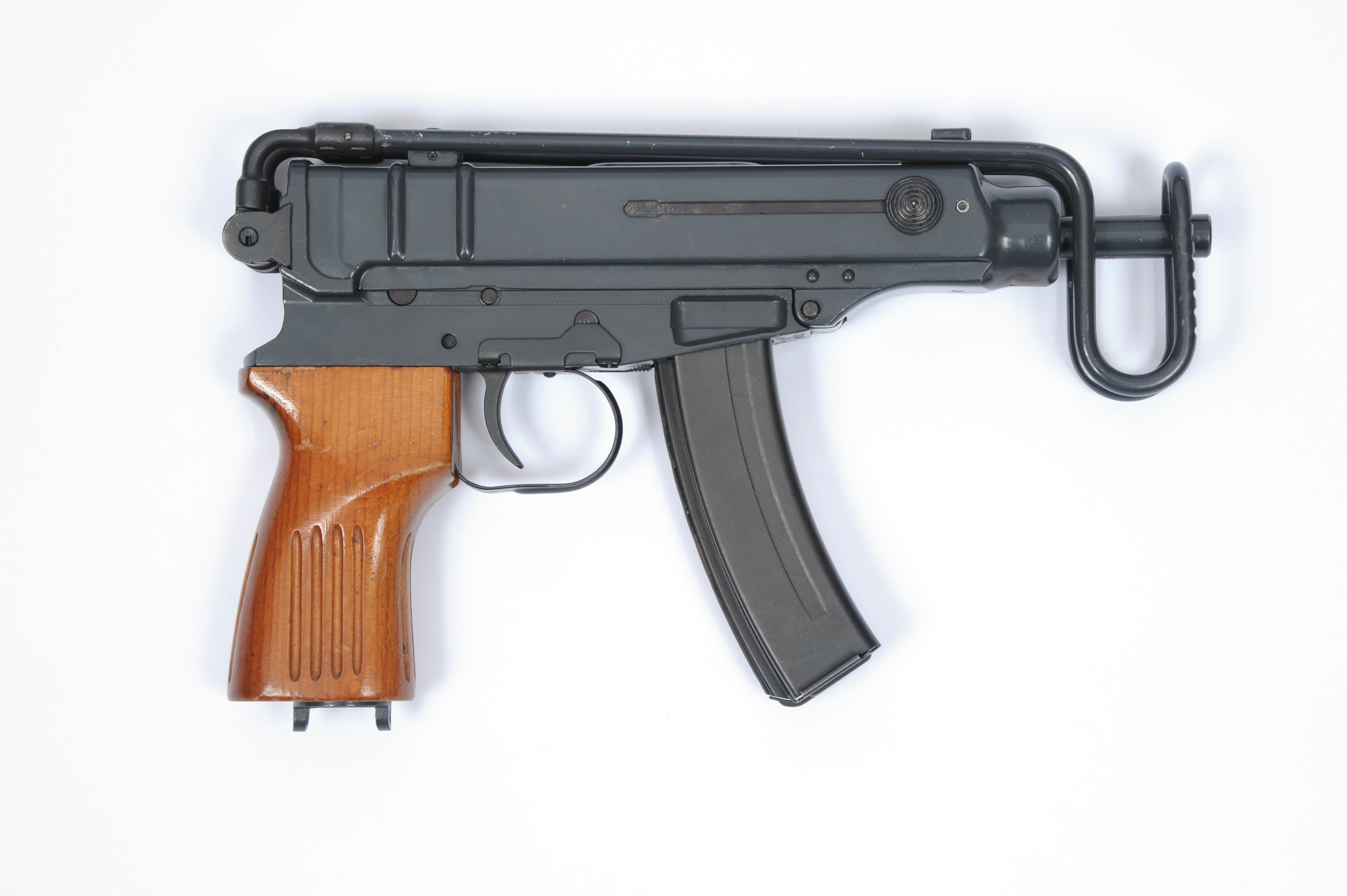It may not be a familiar name to the general public, but the Czech-produced Škorpion vz.61 is probably no stranger to fanciers of films dealing with crime, intrigue, espionage and terrorism.
You know the scene in which someone on one side or the other—or both—draws an automatic weapon the size of a large pistol and starts spraying the room with lead? The compact weapon might be an Uzi or it might be an Ingram…but it’s equally likely to be a Škorpion.
Miroslav Rybář (1924-1970) originally had security forces in mind when he conceived of the little weapon in 1959, but it was readily accepted by the Czechoslovakian army for use by low-ranking staff, vehicle crewmen and special forces.
It entered production in 1961 by the Česko zbrojovka arms factory in Uherský Brod as the Samopal vzor 61 (submachine gun 61), although posterity has since questioned the little weapon’s official status: submachine gun or machine pistol?
The Škorpion is a hammer-fired, straight-blowback-operated weapon with a lightweight, telescoping bolt assembly that wraps around much of the barrel, accounting for the gun’s overall compactness. It fires from the closed bolt position, which helps it more accurate than a comparable open-bolt weapon.
That is further helped by the low recoil impulse of its 7.62x17SR Browning Short cartridge, which when fired is driven back by the blowback gases and the inertia of the bolt against two recoil springs, to be ejected vertically upward through a port in the receiver housing top cover.
[Read More: How the the FN FAL took on the AK-47]
[Read More: How the North Vietnamese army modified a WW2 submachine gun for its war against the US]
One somewhat irritating side effect of that action is experienced by shooters firing from a stationary position, as the hot cartridges tend to fall back down, directly on his head.
Another minor annoyance is the small button on the right side of the receiver that cocks and chambers the first round. This lever does not jut out as on normal SMGs, making for some awkward charging, but it does allow the Škorpion and a 10-round curved box magazine to fit snugly inside a large leather pistol holster.
A selector lever on the left side of the receiver gives the shooter a choice of three settings: “0” for safe, “1” for semiautomatic and “2” for fully automatic firing mode. Additionally, an inertial rate reducer in the handle can be further adjusted to lower the rate of fire from 1,050 to a more manageable 850 rounds per minute.
Besides the gun holster, optional ammunition holsters contain curved 20-round magazines for added firepower.
The Škorpion’s iron sights include a mechanically adjustable post in front and a flip rear sight with notches for 75 and 150 meters. A wire stock folds forward over the receiver to lock on the front sight’s protection capture. Although the Škorpion can fire reasonably accurate short bursts when held in two hands, anyone with a musculature falling below that of Arnold Schwarzenegger would be well advised to flip the shoulder stock back when firing fully automatic.
A total of 200,000 Škorpions were produced by the Czechoslovakians between 1961 and 1979. A strictly semiautomatic civilian version, the vz.61S, could be had to fire 7.62mm or 9mm rounds (the latter carried in straight, rather than curved magazines). In addition, Yugoslavia license-produced the sv.61 from 1984 to 1992 as the M84, with a plastic pistol grip in place of the wooden one used on the Czech original.
A strictly semiautomatic civilian version, the M84A, was bored to use either the 7.62mm or a 9x17mm short round. After the breakup in Yugoslavia, production continued in Serbia.
Škorpions have seen use in the armies or security forces of more than 20 countries throughout the world. During the Vietnam War some turned up in the hands of North Vietnamese and Viet Cong. Others saw use in civil conflicts in Lebanon, Peru, Liberia and Yugoslavia.
However handy the Škorpion has been among military and police personnel, that very trait made it a natural choice for criminals and terrorists as well. The Irish Republican Army made it a part of their arsenals throughout “The Troubles.”
On March 16, 1978, Škorpion-armed members of the Italian Red Brigades kidnapped former prime minster Aldo Rossi, in the process kicking two carabinieri and three policemen, subsequently murdering him as well on May 9.
In the 1990s the Gang de Roubaix, a terrorist cell of Al Qaeda, used Škorpions in a number of robberies and other attacks in France. In 2017 Swedish authorities estimated some 50 formerly deactivated Slovakian-produced vz.61s had found their way into the hands of Swedish criminal gangs.
All this adds up to some food for thought the next time one sees Škorpions in action on the silver screen. Is art imitating life or the other way around?





